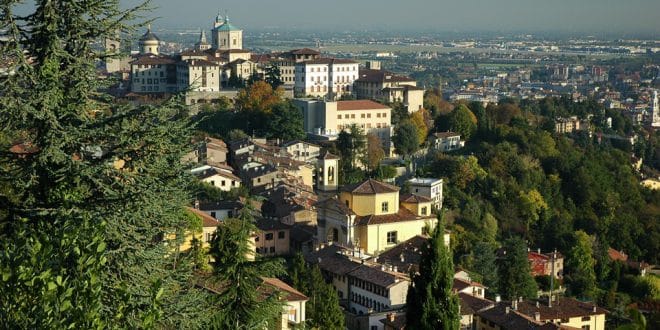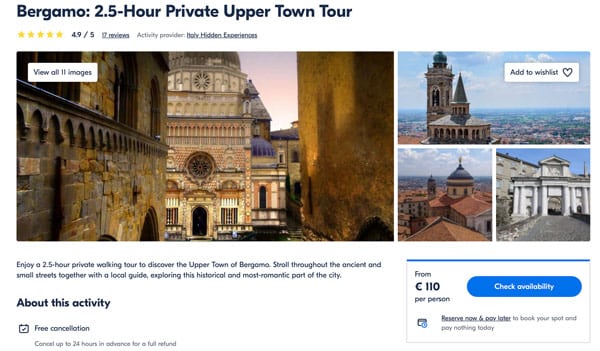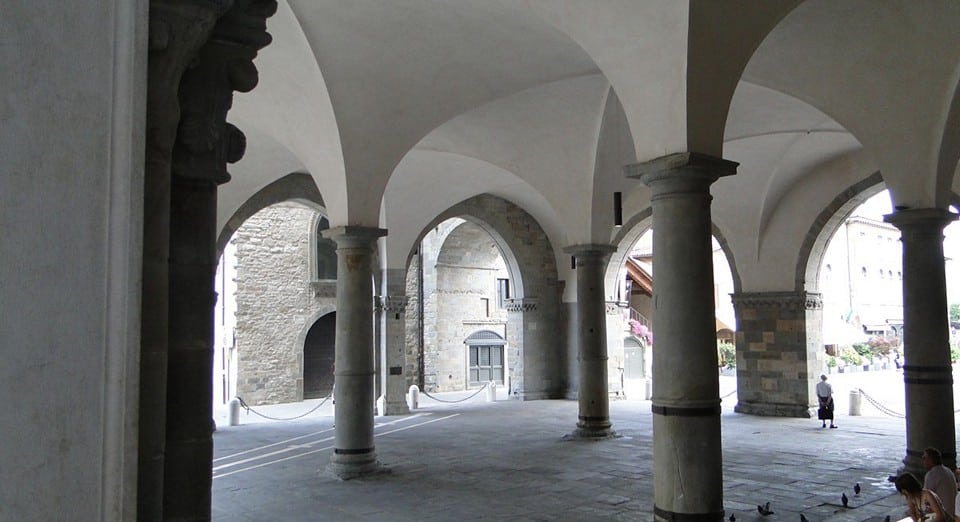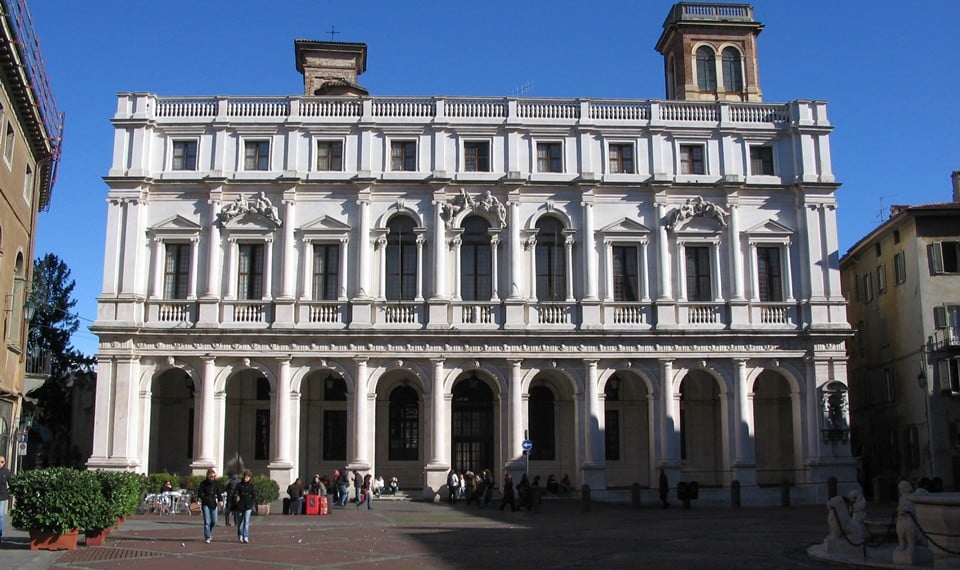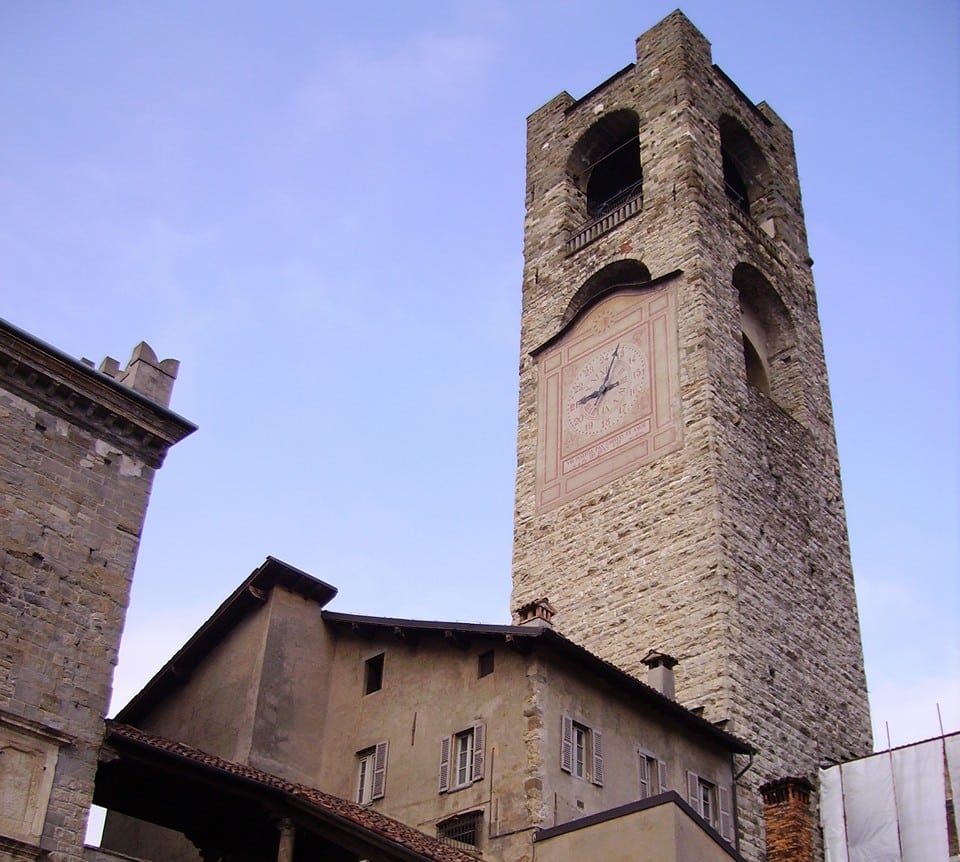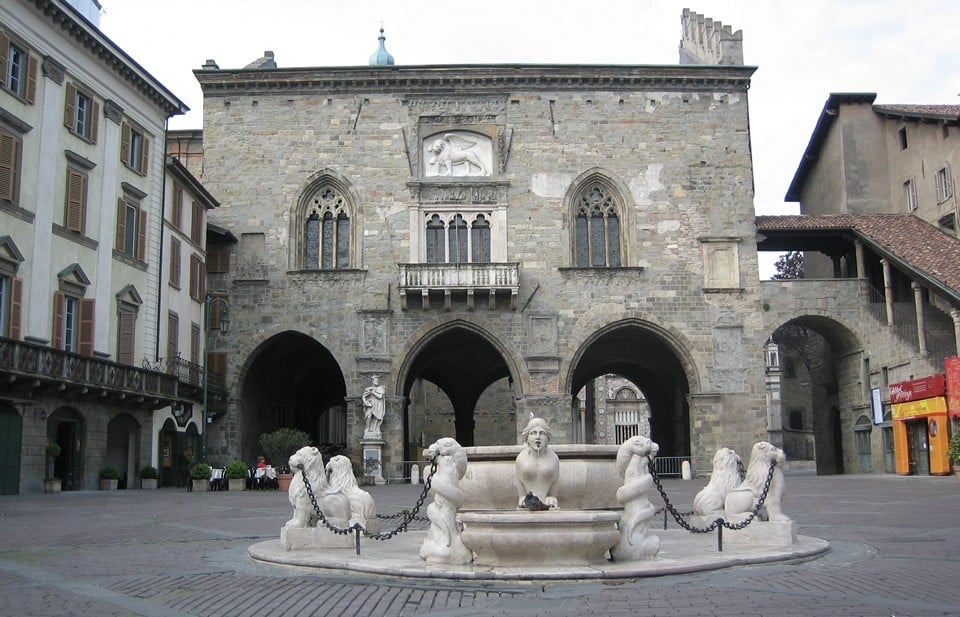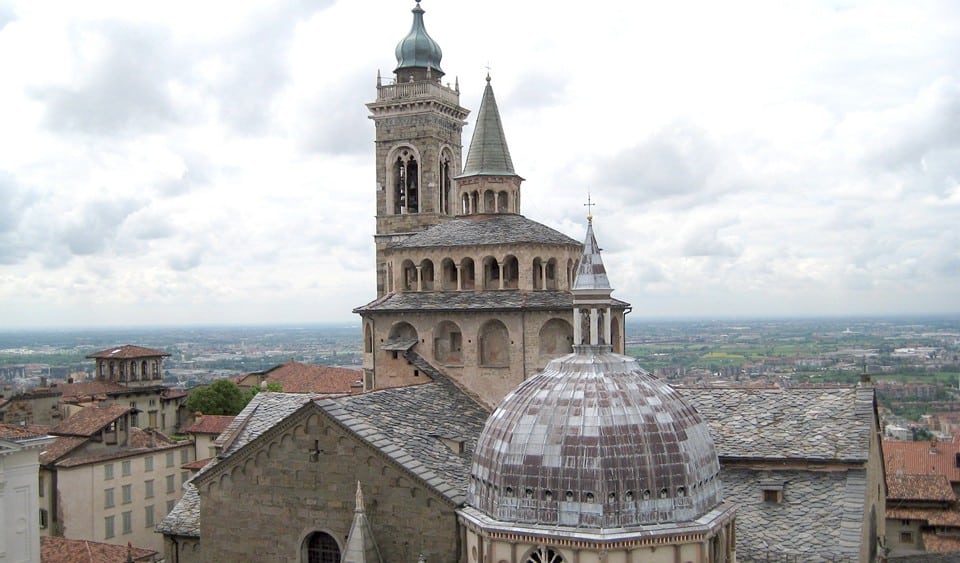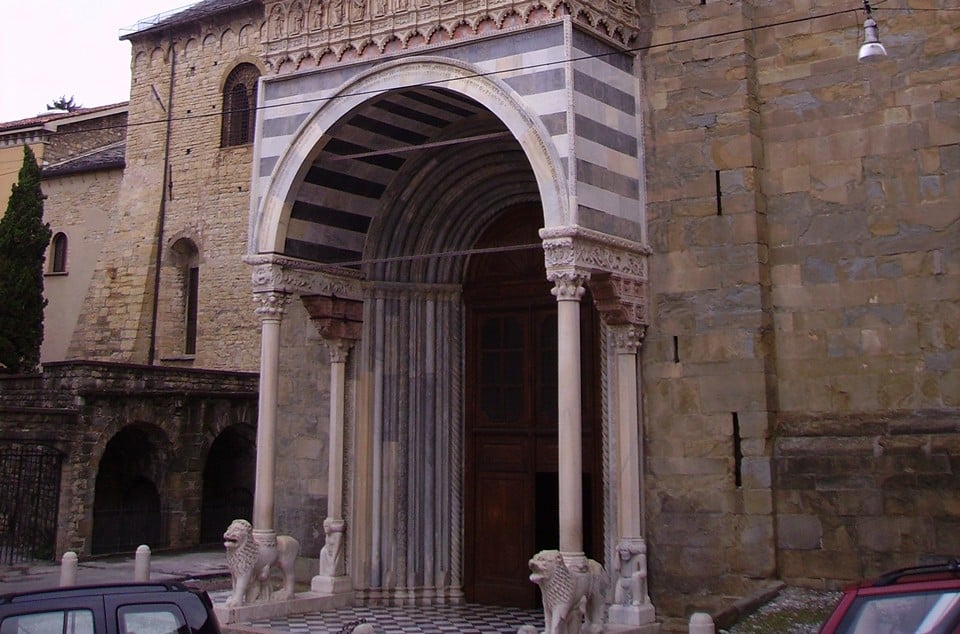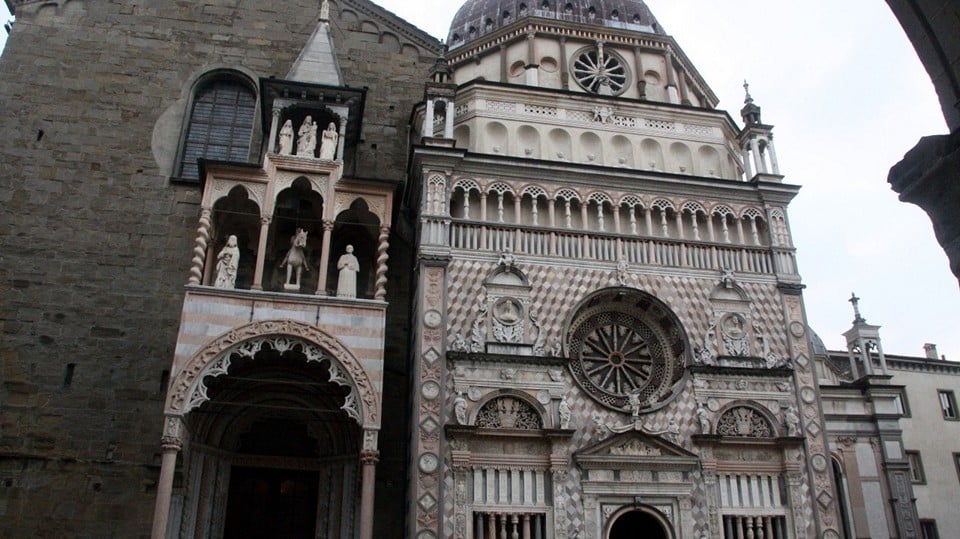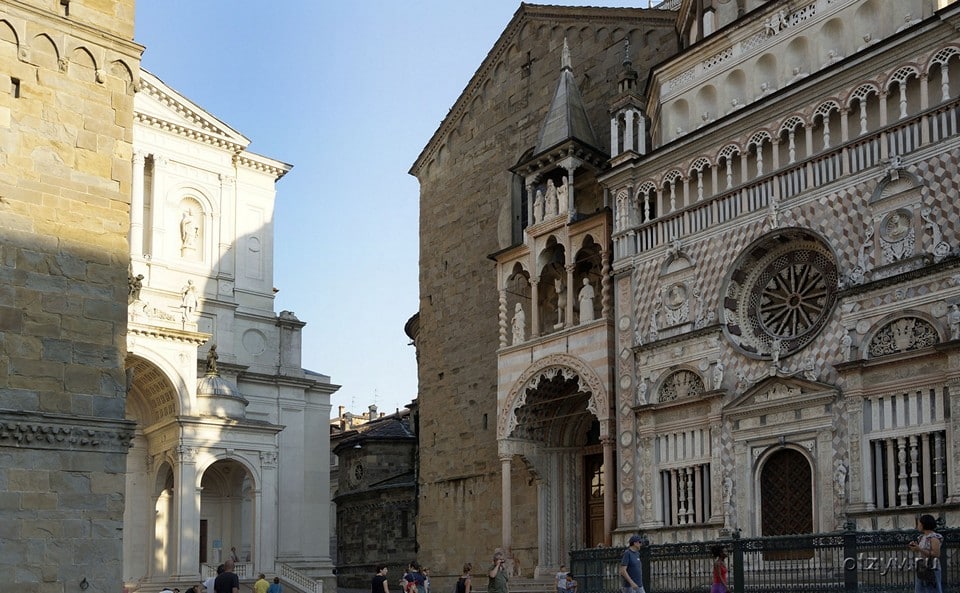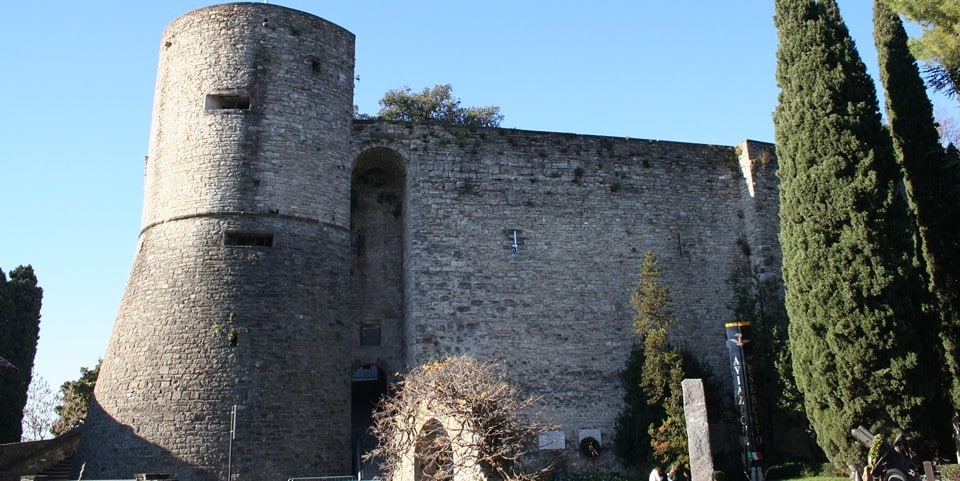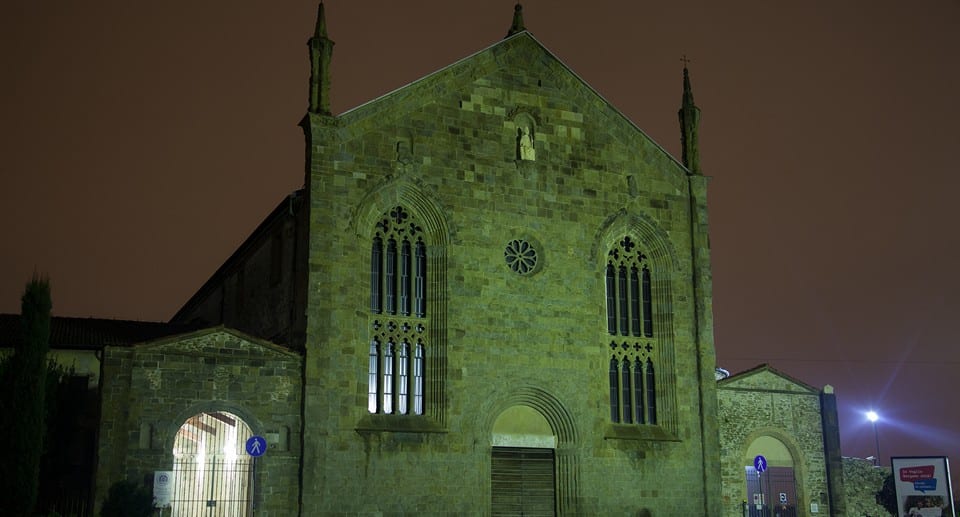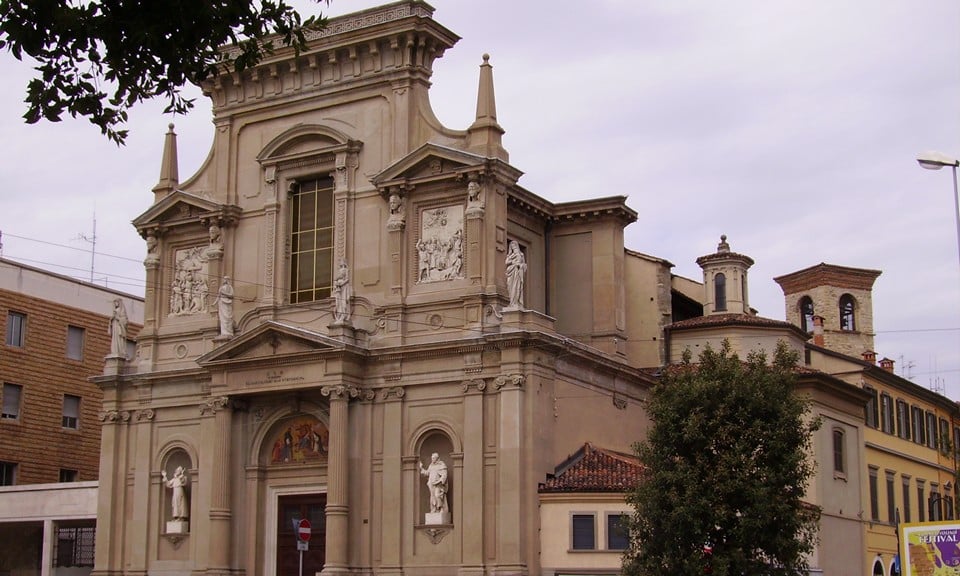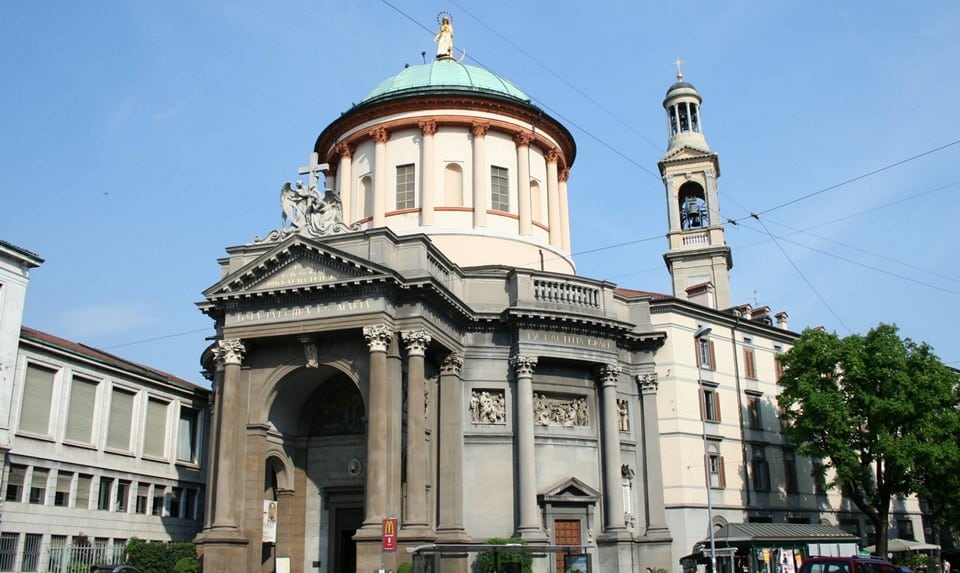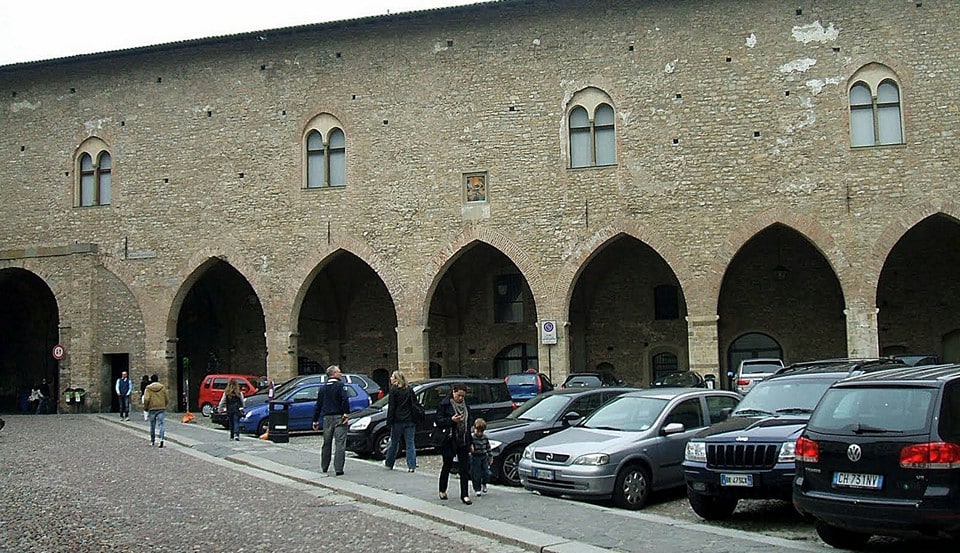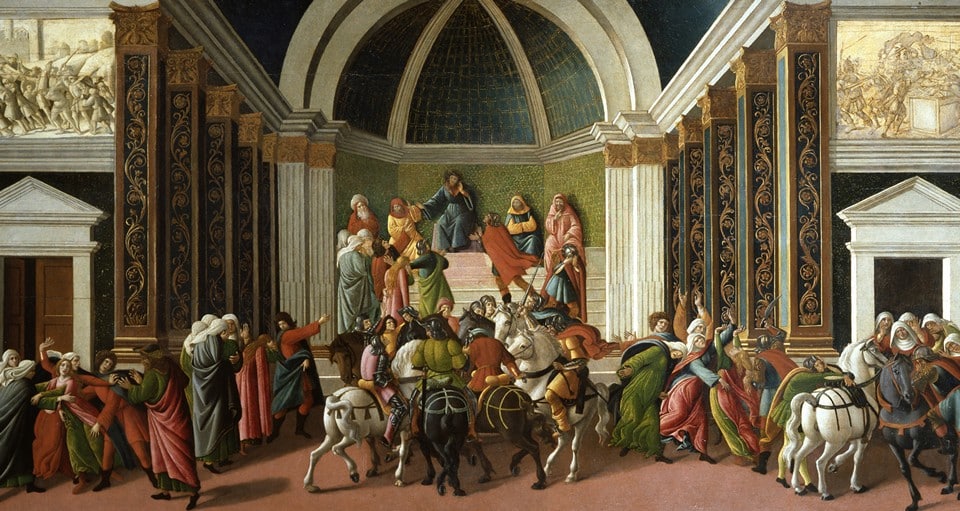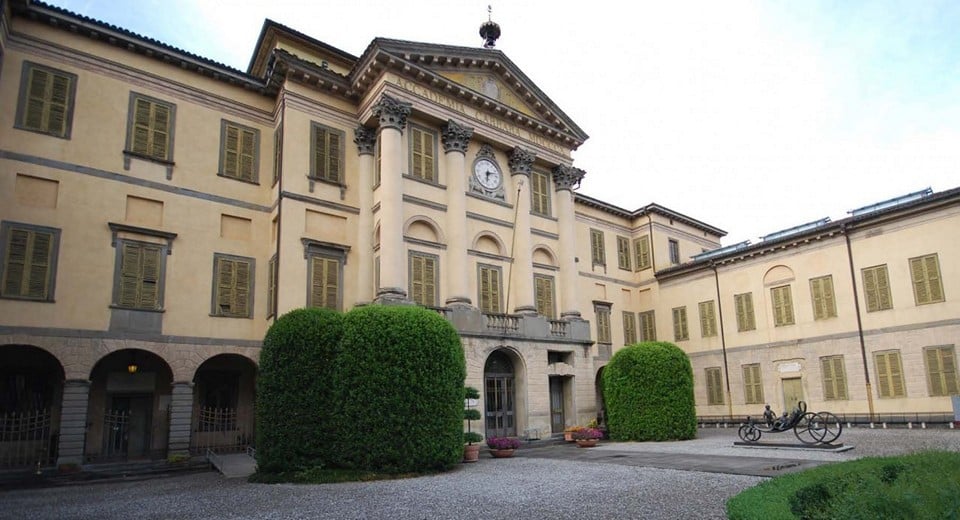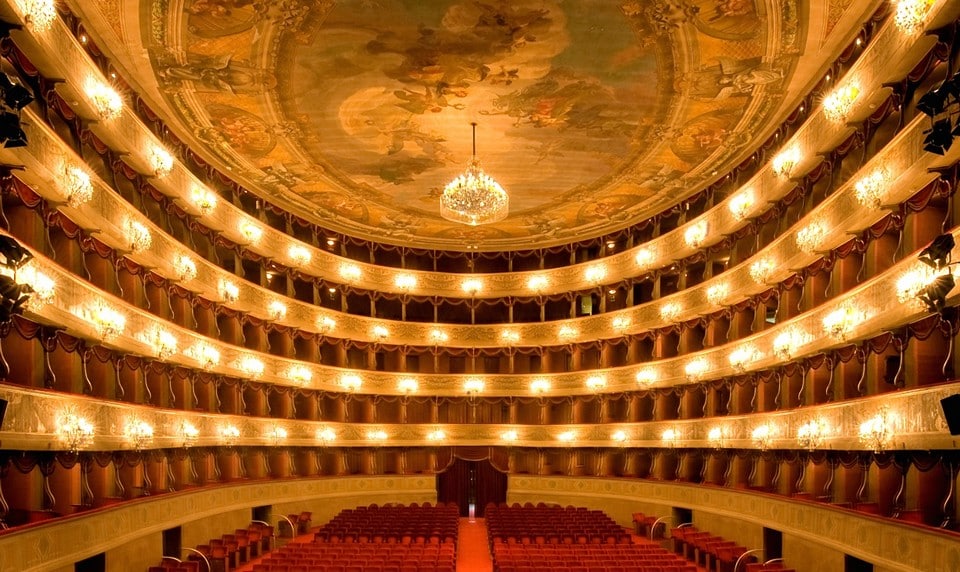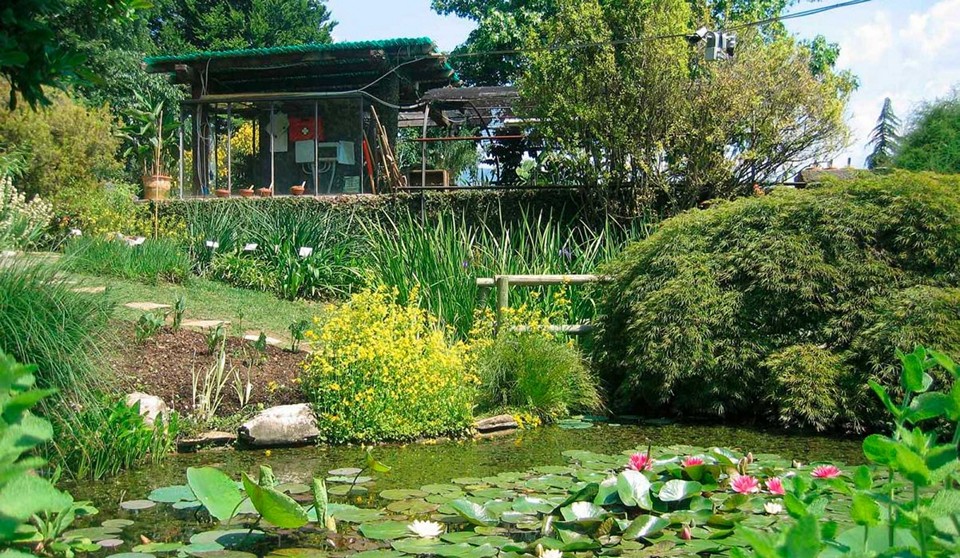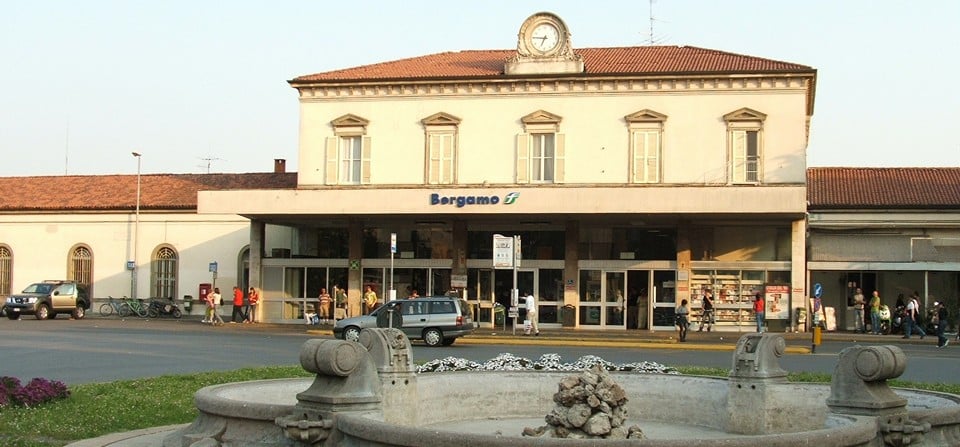Let’s dive into the charming city of Bergamo, Italy. Bergamo is the place that introduced the world to Truffaldino, Arlecchino, and Brigella – those quirky characters we love. It’s still got those medieval walls intact, with mighty fortresses flanking its edges, giving the town a real vintage vibe.
The sights in Bergamo are all snugly packed, and the place itself is super cozy. So, if you plan it right, you can check out the main architectural gems in just a day or three.
Page Contents
Where is Bergamo
Location-wise, Bergamo is right smack in the densely populated Lombardy region and plays host as its administrative heart. It’s about 478 kilometers northwest of Rome, as the crow flies. If you’re on a treasure hunt, you’ll find Bergamo on the map at these coordinates: 45°42′ north latitude, 9°40′ east longitude.
Bergamo’s snuggled up in the Alps, right in the embrace of the Po River, Italy’s big-shot waterway. It’s a home for over 116,000 people, and it covers about 39 square kilometers.
Bergamo is a two-sided town: the high-and-mighty “Citta Alta” (Upper Town) and the newer “Citta Bassa” (Lower Town). The historic bits of Bergamo stand tall at 380 meters above sea level, and you can hop on a funicular to cruise between the two. The medieval walls, homes, castles, and all the bells and whistles of Citta Alta will sweep you off your feet.
Bergamo Sightseeing Tours With a Local
Delve into Bergamo’s heart through two exceptional tours designed to reveal the essence of this enchanting city. For those with a culinary curiosity or a thirst for historical narratives, these tours offer a gateway into Bergamo’s dual heritage, encapsulated within the distinct realms of Bergamo Alta and Bergamo Bassa.
Gastronomic Journey: 3 Hour Traditional Food Tour
This culinary voyage invites you to taste Bergamo’s heritage, guided by a local enthusiast. Journey from the storied lanes of Città Alta to the vibrant paths of Bergamo Bassa, indulging in Lombardy’s rich flavors. Sip on Valcalepio red wine, enjoy handmade Casoncelli, and savor the simplicity of Polenta with lard and cheese. A stracciatella gelato and Italian espresso elegantly conclude your exploration.
Historic Exploration: 2 Hour Private Upper Town Tour
Starting at the funicular station, this tour unravels Bergamo Alta’s hidden stories. Wander through ancient streets with a local guide, discovering landmarks like the Rocca and Piazza Vecchia. This journey through UNESCO-listed Venetian walls and beyond personalizes your encounter with Bergamo’s storied past.
So, what’you can see for a one-day visit to Bergamo?
Piazza Vecchia
Address: Piazza Vecchia, 24129
How about we start with a gander at Piazza Vecchia? It’s the main square, born in the 15th century after some older buildings got the boot. You’ll find the old and new Town Halls here, plus the tallest tower in town, with a bell that rings a hundred times each evening in memory of those bygone days.
The Old Town Hall
The first building of the old Town Hall, known as Palazzo Vecchio o della Ragione, popped up in the middle of the 12th century.
At first, its main facade faced the nearby Duomo Square and sat right across from the Basilica di S. Maria Maggiore church. But after a hundred years, the place went up in flames, so they had to rebuild it.
The work dragged on and finally wrapped up in the mid-15th century. Right around that time, the Piazza Vecchia got all dressed up, and that’s why they gave the Town Hall’s main front a makeover with a new entrance facing the square. Then, in 1513, the Spanish paid Bergamo a not-so-friendly visit, and the Town Hall suffered some damage again. Restoration work kicked off in 1538, and that’s how the building we see today came up.
What makes the Town Hall interesting to look at? Well, it’s got no ground floor – instead, there are these tall open arches that give the whole stony structure a light and airy vibe. Pass through them, and you’re on the neighboring Duomo Square. There’s a stone staircase leading to the second floor, located on the right side of the Town Hall when you’re facing it from Piazza Vecchia. The windows on the second floor rock a Venetian style. Oh, and there’s a balcony that was once used for announcing important decisions. In the 18th century, they even slapped on some sundials made by the math and physics whiz Giovanni Albrizzi.
Check out the Town Hall’s facade, and you’ll spot a big relief carving of a winged lion – Venice’s symbol. The lion’s cameo here dates back to the fact that Bergamo was under the wing of the Venetian Republic from 1428 all the way to the late 18th century when Napoleon Bonaparte rolled in.
They used Palazzo della Ragione as a spot for dishing out justice. While right across the way, they put up a new Town Hall for the city council to do their thing. Today, you can find an exhibit of icons and paintings from the 14th to 16th centuries that were hauled in from monasteries, temples, and other civic buildings. Getting into the Old Town Hall is a bit like playing a scheduling game – it’s only open on specific days and hours depending on what’s going on in the Sala delle Capriate hall.
The New Town Hall
Now, let’s switch gears to the New Town Hall – Palazzo Nuovo. It’s right across from Palazzo Vecchio o della Ragione. The construction party started in the 17th century and wrapped up in the mid-20th century. In 1928, they gave the facade a makeover with some snazzy white marble, and in 1958, they added six sculptures.
Throughout all this time, the building went through a few facelifts, but it managed to hold onto that Baroque vibe. There’s a portal with Doric columns, balustrades, and arched awesomeness adorned with sculptures. Step inside, and you’ll catch a glimpse of Pietro Baschenis’ groovy and allegorical frescoes.
Since 1928, Palazzo Nuovo has been home to one of Italy’s largest libraries – Angelo Mai. This place houses 700,000 volumes, 11,000 newspapers and journals, and 2,000 books printed in Europe before 1501. And oh, by the way, it’s got a collection of books from Cardinal Giuseppe Alessandro Furietti that he gifted to Bergamo in 1768.
The Civil Tower
The Civil Tower – La Torre Civica or La Torre Campanone is to the right of Palazzo Vecchio o della Ragione, if you’re facing the old Town Hall.
This is the tallest tower in town. It started at 37 meters tall, but over time, they made some size upgrades. By the 16th century, it hit a whopping 57 meters. It’s like the higher the tower, the higher up in the social ranks the owner was.
They got the show on the road back in the 11th century. For a while, it was owned by the fancy aristocratic Suardi-Colleoni family. Then, the city took over the tower, and it got a new name – Torre Civica. They popped bells up top, and in 1656, the biggest one of the bunch showed up – the Campanone bell. It’s got a diameter of 2.7 meters and weighs 5.6 tons, and it’s the reason the tower’s also known as Campanone. Every day at ten in the evening, it reminds everyone of the days when the city gates would close. It was also used to summon the townsfolk to meetings.
In the 19th century, La Torre Civica got a facelift, and in 1960, they added an elevator. So, if you want to take in a panoramic view of the city, you’ve got options: hoof it up the stairs or catch a lift.
Fountain Contarini
Address: Piazza Vecchia, 12
Right in the middle of Piazza Vecchia stands the Contarini Fountain (fontana Contarini). It’s named after Alvise Contarini, who gifted Bergamo with this fountain back in 1780. And this gift wasn’t just about making the central square look fancy – you could quench your thirst from this fountain even during dry spells.
In 1885, they took apart the fontana Contarini to make room for a monument to Giuseppe Garibaldi. Later on, they decided to move that monument to a different spot in town. So, come the early 20th century, they restored the Contarini Fountain to its original spot, good as new.
This fountain sits on a marble base with a big octagonal bowl in the center. Water spouts out from a small fountain in the center and fills up the basin. Lions and snakes surround the bowl, holding onto chains in their mouths. Flanking the fountain on opposite sides are statues of sphinxes – one gazing at the old Town Hall, the other at the new one. Pipes run from their mouths, feeding water into basins below. And yes, you can drink this water, which is a blessing for tourists and locals on sweltering summer days.
Cathedral Square
Take a stroll through the gallery of the old Town Hall on Piazza Vecchia, and you’ll find yourself on piazza del Duomo (Cathedral Square). Here, you’ll encounter the two main temples of the city – the Cathedral of Sant’Alessandro and the Church of Santa Maria Maggiore. Right beside it, there’s a Renaissance masterpiece – the Colleoni Chapel (Capella Colleoni). And not too far off, you’ll spot the octagonal baptistery.
Basilica di Santa Maria Maggiore
Address: Piazza Duomo, 5
The construction of the Basilica di Santa Maria Maggiore started in the 12th century. They took their sweet time building it, with plenty of interruptions. By the 14th century, the baptistery was complete, and in the late 15th century, the bell tower was added. Around the same time, the Colleoni Chapel popped up, replacing the demolished northwest apse. Fifty years later, the southwest portal was finished, and that pretty much wrapped up the changes. Since then, the landmark has undergone a few restorations, but no major alterations.
Unlike many Catholic churches where the main entrance faces the presbytery, the basilica’s main entrance is on the side, adjacent to the bishop’s palace. So, there’s no central entrance, and you can only get inside through four side entrances, two of which are named “Porta dei Leoni bianchi” (Gate of the White Lions) and “Porta dei Leoni rossi” (Gate of the Red Lions). These names come from the lion sculptures that flank the columns of the portals – one set is white, the other red.
Above the portals, you’ll find sculptures and reliefs in two rows, depicting Jesus Christ, the Virgin Mary, and various saints. These decorations are among the few on the exterior wall of the church, where the “Porta dei Leoni rossi” is located. On the side with the white lions, the facade has a more intricate look.
The interior of the church, for the most part, is decked out in Baroque style. The walls and columns are adorned with tapestries from the 16th and 17th centuries, depicting scenes from the life of the Virgin Mary. There are also bronze candelabra from the 16th century, frescoes, and a huge 14th-century crucifix. The confessional, carved from wood, was crafted by Andrea Fantoni in 1704.
In the 13th century, the church served as a place of worship and a gathering spot. However, when the city fell under the jurisdiction of the Venetian Republic, the basilica was used only for its intended purpose.
Colleoni Chapel
Address: Piazza Duomo, 5
The Colleoni Chapel (Cappella Colleoni) is a Renaissance architectural marvel. It was built in the 15th century, and unlike most structures in Italy, it hasn’t been significantly altered – only restored.
This incredibly beautiful building, adorned with colorful marble, was commissioned by Bartolomeo Colleoni on the site of the northwest apse of Santa Maria Maggiore. He ordered soldiers to tear down the apse for this purpose.
Architect Giovanni Antonio Amadeo, who designed the chapel, took the architectural features of Santa Maria Maggiore into account. The result is a small octagonal building with a ribbed dome.
The facade of the chapel is decorated with various ornamental elements and entirely covered in colorful marble, forming intricate patterns. The upper part of the facade and drum of the dome feature medallion windows.
Inside the chapel, the decoration is in the style of the Renaissance: sculptures, paintings, frescoes, and gilding. Opposite the entrance is a sarcophagus containing the remains of Colleoni himself. It’s another masterpiece, intricately carved from marble, adorned with numerous decorative elements. On the left wall, there’s a tomb for Colleoni’s daughter, who passed away five years before her father (in 1470). The sculpture depicts the removal of Jesus from the cross.
Baptistery
Address: Piazza Duomo, 8
The Baptistery (Battistero), located next to the Santa Maria Maggiore church, is often called the “wandering” baptistery. It was first constructed in the western part of the central nave of the church in 1340. It remained there until 1661 when it was dismantled and moved to a different location. This history repeated itself twice more until it finally ended up on the western side of Cathedral Square in the late 19th century.
The current baptistery is an octagonal building in a neo-Gothic style. The facade is simple, partially covered in red marble, and the dome’s corners are adorned with eight statues representing human virtues. Columns also grace the gallery beneath the statues.
Inside the baptistery, there’s a font where children are baptized. Behind it is an altar with a sculpture of John the Baptist. The building’s walls are adorned with reliefs depicting scenes from the life of Jesus Christ, created by sculptor Giovanni da Campione in the 14th century.
Cathedral of Sant’Alessandro
Address: Piazza Duomo
The Bergamo Cathedral of St. Alexander (Cattedrale di Sant’Alessandro) is nestled right behind the rear of the old Town Hall, whose main facade faces Piazza Vecchia. It was built by dismantling the church of St. Vincent and was named after Saint Alexander, whose remains were transferred here.
Previously, his relics were housed in the Church of Sant’Alessandro, which was destroyed to make way for a defensive wall.
Construction of the cathedral began in the mid-15th century. However, by the late 17th century, the building underwent significant modifications, including an enlarged dome and extended apse. In the 19th century, changes were made to the facade, bell tower, and interior decor. The facade of the church is modest, while the interior is spacious, cozy, and well-lit. Inside, you’ll find works by artists like Giovanni Battista Tiepolo, Giovanni Battista Moroni, and Andrea Previtali.
In the basement of the cathedral lies the Cathedral Museum and Treasure. During restoration works, traces of prehistoric settlements were discovered here, as well as the remains of an earlier church dedicated to Saint Vincent and other intriguing finds that you can explore. The museum also houses precious relics that recount the church’s history.
Defensive Structures
Bergamo stands as one of the few cities in Italy where medieval walls, castles, and fortresses have survived. They immediately catch one’s eye upon entering the old town.
Venetian Walls
Address: Viale delle Mura
The walls encompassing the Upper Town stretch over 6,200 meters. To construct them, the Venetians, who held dominion over the city for more than three centuries, demolished 250 houses and 7 churches. By the time the construction was completed, Bergamo could boast:
- 32 watchtowers (only one remains);
- Fourteen bastions;
- Two platforms;
- An abundance of cannons.
The wall construction concluded in the late 17th century. However, by this time, Venice’s interests had shifted elsewhere, and thus, they never had to fight for Bergamo. Consequently, nearly all spaces that were once part of the city walls were repurposed as storage. In the late 18th century, Napoleon Bonaparte’s forces easily entered the city, and the handover of Bergamo to Austro-Hungary was also achieved peacefully.
In 1959, troops led by Giuseppe Garibaldi entered the city through the gates of Saint Lawrence. This event led to Bergamo becoming part of Piedmont, and subsequently, part of unified Italy.
By the end of the last century, the walls were reconstructed, and a promenade was established alongside them. This pathway provides an opportunity to enjoy the panoramic views of the lower city. The main gateway leading to the historical center is the Saint Augustine Gate (Porta San Agostino).
Rocca Castle
Address: Piazzale Brigata Legnano, 16
Rocca Castle (Rocca di Bergamo), which translates to “Rock,” stands not far from the funicular on Via alla Rocca, situated atop the hill of Saint Euphemia (Sant’Eufemia).
This fortress castle’s construction began in 1331 by order of King John of Luxembourg, who was also the king of Poland and Bohemia. He had conquered Lombardy in that year. Though his rule was short-lived, lasting only two years, the construction of the fortress continued. While officially completed in 1336, Rocca Castle underwent constant expansion and improvement. For instance, in 1483, a round tower was added to house barracks.
Later, Rocca di Bergamo became part of the city’s defensive complex, connecting to the city walls with two citadels, effectively enclosing the town in a triangle. When Bergamo came under the jurisdiction of the Venetian Republic, the “Venetian Walls” were added. Despite these developments, Rocca Castle retained its defensive significance.
At one point, the round tower stored gunpowder and withstood two explosions in the adjacent gunpowder depot. During the Risorgimento period (the Italian national liberation movement), the fortress served as a prison for Italian patriots.
Today, the fortress houses the Civic Museum of the Risorgimento and Resistance (Museo Civico del Risorgimento e della Resistenza). The park surrounding the castle offers not only a place to relax and enjoy the panorama of the Lower Town but also military monuments, cannons, and a tank.
The Citadel
The Cittadella di Bergamo (Cittadella Viscontea) was built in the second half of the 14th century in the western part of the old town, on the hill of Saint John (Sant’Ioanne). Its precise location is Piazza della Cittadella. During the rule of the Venetian Republic, the nuncio’s residence was situated here.
The complex now offers a pleasant experience. On one hand, there are powerful arches and ancient walls; on the other hand, there is no sign of decay—everywhere is clean and tidy. When a tourist approaches the city from this side, they are immediately greeted with the magnificent sight of Bergamo.
Tower of Adalberto
Address: P.za Lorenzo Mascheroni, 5
Overlooking the Cittadella stands the square Tower of Adalberto (Torre di Adalberto). This construction from the 10th to 13th centuries once served as a prison. The tower is nearly devoid of windows, and its entrance is inaccessible—both by design to prevent both entry and escape. This tower was used to imprison captives who attempted to conquer the city, as well as citizens who failed to pay taxes, earning it the nickname “Tower of Hunger.”
Churches
Many of Bergamo’s churches have unassuming exteriors, allowing travelers to pass them by without notice. However, those who take the time to enter are greeted with the richness and beauty of their interior decorations, along with a sense of tranquility and comfort.
Chapel of the Holy Cross
The Chapel of the Holy Cross (Tempietto di Santa Croce di Bergamo) is situated at Piazza Padre Reginaldo Giuliani, 25. To reach it, one can circumnavigate the Basilica of Santa Maria Maggiore and enter the courtyard near the Gate of the White Lions. The chapel is also accessible from the side of the baptistery.
This building stands as one of Bergamo’s oldest landmarks, having been erected in the first half of the 11th century. It exemplifies Romanesque architecture. Since the 12th century, the chapel has served as a personal sanctuary for local bishops. In earlier times, the chapel, the bishop’s residence, and the basilica were part of a unified complex. Today, the church is closed to visitors and not even accessible during holidays.
The chapel was constructed from brown sandstone. The lower portion is broader, while the upper portion takes an octagonal shape with rectangular windows. Inside, the chapel features a rectangular floor plan adorned with frescoes and bas-reliefs depicting saints and four bishops. The dome portrays God the Father (created by Francesco Coghetti).
Church of St. Michael
The Church of Saint Michael (Chiesa di San Michele al Pozzo Bianco) is located on Via Porta Dipinta, 45. The original church appeared here in the 8th century but was destroyed and rebuilt in the 12th and 13th centuries. The stone masonry, crypt, and frescoes that adorn it have survived from those times.
The church has undergone numerous restorations since its inception. In the 15th and 16th centuries, the interior of the nave was entirely renovated, and arches were modified. The interior was decorated with frescoes by Lorenzo Lotto, while the chapel was painted by Giovanni Battista Guarinoni d’Averara. Giacomo Scanardi worked on the vicar’s house adjacent to the church.
In the 20th century, extensive restoration work was carried out, resulting in significant changes to the facade and bell tower. As frescoes from the 14th and 15th centuries were painted over earlier ones, parts were removed to reveal the Romanesque paintings, allowing visitors to witness the church’s artistic evolution.
Church of St. Bartholomew and Stephen
One of the main churches in the Lower Town is the Church of Saints Bartholomew and Stephen (Chiesa dei Santi Bartolomeo e Stefano). This attraction is located on Largo Bortolo Belotti, 1, one of the streets leading from the railway station to the historic part of the city.
The church was constructed in the 17th century on the site of a 13th-century monastery. The Baroque facade was added in 1897. The artists Francesco Monti and Giuseppe Antonio Orelli contributed to the adornment of the church. Inside, there’s a statue of the Madonna della Rosa, created by Ardigino de Bustis in 1440.
The church is renowned for housing Lorenzo Lotto’s painting “Madonna and Child” (Pala Martinengo). This colossal artwork, painted in oils on wood, was created by one of the most famous Venetian artists. It was executed between 1513 and 1516 for the altar of the church of Santo Stefano and Domenico. The latter was demolished half a century later to make way for Venetian walls. Eventually, the painting found its home in the Church of Saints Bartholomew and Stephen.
Church of the Immaculate Virgin Mary
The Basilica of the Immaculate Virgin Mary (Chiesa di Santa Maria Immacolata delle Grazie) is situated in Citta Bassa, in the lower town. The exact address Viale Papa Giovanni XXIII, 13. This landmark is often the first encounter for tourists arriving at the railway station.
In the 15th century, the church was located near the monastery of St. Bernardino of Siena. In the early 19th century, the monastery was demolished due to railway construction. However, the church was spared and even underwent restoration.
The temple’s neoclassical facade stands out, with a portal supported by columns. Inside the church, above the left altar, you’ll find a 17th-century painting by Gian Paolo Cavagna depicting the Virgin Mary with the young Jesus Christ kneeling before her, with Bergamo in the background. The fresco above the central altar portrays the expulsion of the first humans from paradise, with a painting of the Assumption of the Virgin Mary above it. In the treasury, you can find centuries-old church artifacts.
Church of the Holy Spirit
Address: Via Torquato Tasso, 100
The Church of the Holy Spirit (Chiesa di Santo Spirito) is located on Via Torquato Tasso, 100, in the Lower Town, not far from the Church of Saints Bartholomew and Stephen. Its facade is strikingly unconventional—rough, unfinished, rugged stone, crowned with a metal sculpture in an avant-garde style resembling a descending bird. This work, titled “Descent of the Holy Spirit,” was created by Francesco Somaini and was added to the facade in 1972.
The church was built in the 16th century by the monks of the Monastery of the Holy Spirit. Initially, it wasn’t particularly large, but two hundred years later, it was reconstructed, becoming significantly larger with higher walls. The facade emerged in the 18th century, exuding an austere Renaissance style.
Inside the church, you’ll find towering sandstone columns adorned with sculptural compositions. The church is embellished with paintings by esteemed masters, including Lorenzo Lotto’s masterpiece “Madonna on the Throne” (La Pala di Santo Spirito) and Andrea Previtali’s painting “John the Baptist and Other Saints.”
Museums
Bergamo is a historic city, so there are plenty of museums here. To save money, you can get the Bergamo Card, which grants the holder free or discounted access to museums and other attractions in the city and its suburbs. The card also covers public transportation, including the funicular.
The Bergamo Card is valid for 48 or 72 hours from the moment of activation. Unfortunately, since the project was recently launched, the card is occasionally unavailable for sale. But if you purchased the card before it stopped being sold, it remains valid and can be used.
Archaeological Museum
The Bergamo Archaeological Museum (Civico museo archeologico di Bergamo) is located in the Visconti Palace (Palazzo Visconteo) on Piazza Cittadella, 9. Entry is free.
The exhibition originated in 1561 and for two hundred years was housed in the old town hall. The collection was moved several times. It found its home in the Visconti Palace in 1960, but there are plans to relocate the museum to a more spacious venue in the future.
Within the museum, there’s a hall featuring artifacts from the Copper, Bronze, and Iron Ages. The Egyptian collection showcases statuettes, jewelry, utensils, and sarcophagi. The Roman hall displays granite slabs, weaponry, mosaics, and ancient statuettes. There are also exhibits that narrate the history of Christianity and Lombardy.
City Museum of Natural Sciences
The Enrico Caffi City Museum of Natural Sciences (Museo Civico di Scienze naturali “Enrico Caffi”) is situated on Piazza Cittadella, 10, near the Archaeological Museum. Entry is free.
The exhibition was created in 1871, and its official opening took place half a century later in 1918. The museum’s collection holds over a million exhibits, including a full-size dinosaur skeleton, fossils of the oldest flying reptiles, mammoth remains, insects, and plants. Notably, there are Paleozoic era corals as well. Some items are interactive, and visitors can examine them under an electronic microscope.
Pinacoteca
The Carrara Academy Picture Gallery (Pinacoteca dell’Accademia Carrara) is located in the lower part of the city, at Piazza Carrara, 82/a. The museum owes its existence to the collection donated by Giacomo Carrara in the 18th century. The collection was so extensive that authorities decided to construct a separate neoclassical building. The gallery opened in 1810.
The Pinacoteca features ten exhibition halls spread across three floors. Visitors can admire artworks from the 15th to the 20th centuries, including pieces by Sandro Botticelli, Raffaello Santi, and Pisanello. Besides paintings, the gallery holds engravings, drawings, sculptures, medals, bronze and porcelain items, and furniture.
Previously, the building housed a painting school at Giacomo Carrara’s request. It later moved to a neighboring space and became the Academy of Fine Arts (Accademia di Belle Arti) in 1988.
Gallery of Modern Art
Address: Via San Tomaso, 53
The Gallery of Modern Art (Galleria d’Arte Moderna e Contemporanea) is situated opposite the Pinacoteca and became part of it in 1991.
The permanent exhibition is spread over three floors and showcases paintings, engravings, drawings, and photographs from 20th-century masters. Works by Umberto Boccioni, Giacomo Balla, and Giorgio Morandi are among the highlights. The gallery also hosts temporary exhibitions of contemporary artists.
Diocesan Museum Adriano Bernareggi
The Diocesan Museum Adriano Bernareggi (Museo Diocesano Adriano Bernareggi) is housed in the Bassi Rathgeb Palace. It’s located at Pignolo, 76, in the lower part of Bergamo. To visit, you can take a walking route towards Citta Alta.
The exhibition was established in the 1930s thanks to local bishop Adriano Bernareggi. The exhibits tell the story of Christianity through paintings, icons, church attire, and other religious items.
Donizetti Theater
The Gaetano Donizetti Theater (Teatro Gaetano Donizetti) is situated in the lower city, at Piazza Cavour, 15.
Its location is not coincidental: in the 18th century, this square used to be the city’s marketplace. As there were always many people here, traveling theater groups would perform on the square, constructing temporary wooden stages that were dismantled at the end of the season.
As a result, wealthy merchant Bortolo Riccardi decided to build the city’s first theater on the square, which opened in 1791. Unfortunately, six years later, Riccardi’s theater burned down due to arson. However, it was quickly reconstructed. The opening of the new neoclassical-style building took place in 1800.
Since then, the theater has been the hub of the city’s cultural life, operating continuously without any closures. In addition to opera, ballet, and dramatic performances, the theater hosts jazz and symphony concerts, festivals, and charitable events.
Tourists don’t necessarily need to buy a ticket to a performance to see the theater’s interior: guided tours can be arranged by prior agreement.
It’s intriguing to not only explore the building’s interior but also visit the exhibition dedicated to Gaetano Donizetti, the renowned opera composer who was born in Bergamo in 1797. In honor of his centennial year, the Riccardi Theater was renamed after the composer.
Parks and Gardens
Bergamo boasts a natural park spanning almost 5,000 hectares and a botanical garden with rare plants. Festival enthusiasts are also in luck: many of Bergamo’s parks host interesting events on weekends.
Park of the Hills
The Parco dei Colli di Bergamo, a natural park, starts at the city’s outskirts. The main entrance is located on Via Maresana, 140. The park covers an area of 4,700 hectares, not only encompassing the surroundings of Bergamo but also Ponteranica, Sorisole, and Villa d’Almè.
A significant portion of Parco dei Colli is covered in forests, and it’s loosely divided into four sections, each showcasing unique flora and fauna. The park is home to foxes, badgers, and kingfishers. There are areas with orchards, vineyards, and meadows. The highest point of Parco dei Colli is Mount Canto Alto, near the town of Sorisole, 7 km from Bergamo. The mountain’s height is 1,144 meters.
Turani Redona Park
The main entrance to Turani Redona Park (Parco Turani Redona) is located on the outskirts of northwest Bergamo, on Via Montello. This spot is perfect for a picnic on a hot summer day. There are plenty of trees and cozy alleys here. A pond is home to turtles, swans, ducks, and if you’re lucky, you might spot an owl.
For those who enjoy an active lifestyle, there are sports facilities and jogging tracks. Turani Redona Park often hosts various holidays and festivals.
Botanical Garden
Address: Scaletta Colle Aperto
The Botanical Garden (Orto Botanico di Bergamo “Lorenzo Rota”) was established in Citta Alta in 1972. It was named in honor of the scientist Lorenzo Rota, who first classified the plants of Lombardy. The herbarium he collected during his years of work still exists today. Unfortunately, only biologists can view it.
The botanical garden is situated on the hill of Scaletta di Colle Aperto, offering a beautiful view of the lower city and its surroundings. The garden’s area does not exceed 1,500 square meters, and it boasts nine hundred species of flora.
In the 1980s, there was no one to care for the garden, which led to its neglect, and it had to be temporarily closed to the public. In 1989, the city authorities decided to revive the garden and incorporated it into the City Museum of Natural Sciences. Restoration work began after that and lasted for about ten years.
After the garden was reopened for visitors, a permanent staff was hired to care for the plants. In 2004, the botanical garden became a municipal museum.
Admission to the botanical garden is free, but those interested in visiting should check the operating schedule in advance. It’s closed to visitors when it’s not in season.
Fantabosco
Tourists with young children will find it interesting to visit the amusement park Fantabosco, located at Via Luigi Tadini, 21. It’s worth noting that the term “amusement park” is used quite loosely here, as it’s actually an indoor space with play areas featuring swings, slides, and interesting games for children. Adults are not left out either: there are places to relax, read, surf the Internet, and enjoy pizza.
This kind of activity is more suitable for rainy or cold winter weather when strolling around the streets might not be as appealing.
How to Get to Bergamo
The Bergamo Orio al Serio International Airport (Aeroporto di Bergamo-Orio al Serio or Aeroporto Internazionale Il Caravaggio) is located about three kilometers from Bergamo. Although nominally belonging to Milan, it is situated 45 km away from the city.
It is the fifth-largest airport in Italy, serving over eight million passengers annually. Flights arrive here from all European capitals, including Moscow, as well as resorts in Egypt, Algeria, and Morocco. From the airport, you can reach the city by taxi or bus – follow the instructions.
The Bergamo Railway Station (Stazione di Bergamo) is situated in the lower city, at Piazzale Guglielmo Marconi, 7. It receives intercity trains and regional trains. Many trains head in the direction of Milan, taking about an hour to get there. Tourists should be prepared for long lines at the ticket counters, so it’s better to purchase tickets in advance on the official website of Trenitalia.
The Bergamo Bus Station is located near the railway station. Buses from various parts of the country and Europe (over 90 routes) arrive here. The journey to Rome takes about two hours without traffic.
Travelers by car to Bergamo can take the A4 Milano-Brescia highway. Upon arrival, it’s better to leave the car in the lower city and use public transportation to reach Citta Alta.
 Italy for me From Italy with love
Italy for me From Italy with love

